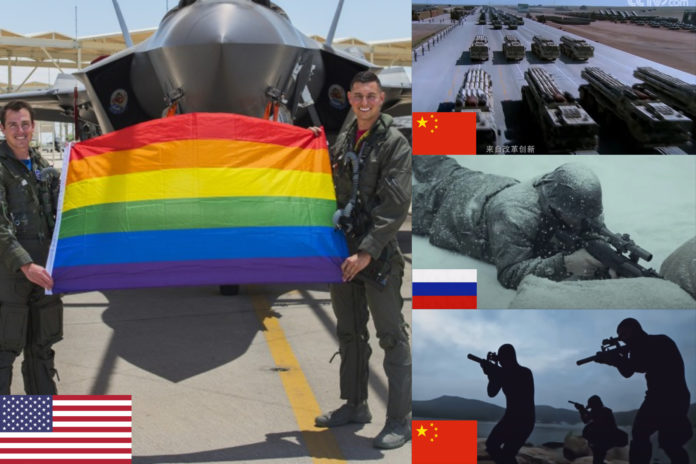Each day, the mainstream media’s cries that war looms with Russia and China grow ever louder.
Analysts claim that a Russian invasion of Ukraine could involve conflict on a scale “not seen in Europe since WWII” as nearly 100,000 troops have been drawn into position. As CNBC’s “experts” warn that “time is running out” to prevent the pending invasion, some mull the possibility of U.S. military intervention — a scenario that would “court destruction of the known world,” per a former U.S. military officer.
Meanwhile, China is apparently preparing to take Taiwan, a move President Joe Biden has said would prompt a U.S. intervention, although the media and even his own White House have attempted to delicately walk back this commitment.
While it’s clear that both Russia and China are peer or near-peer military adversaries that could challenge the air, night and communication supremacy the U.S. has enjoyed in recent conflicts, conducting a proper comparison of the superpowers’ forces is a vastly complicated task.
What is more accessible, though, is looking at how each nation chooses to portray their own militaries to their people and the world.
China
China produces sophisticated propaganda, sometimes with hard-coded English subtitles, that stresses the citizen’s duty to nation.
“We use our lives to fulfill our duties. We use loyalty to build Great Wall,” one military ad says. “If motherland calls, we must be here … I will always be here.”
They also stress “innovation,” flaunt modern weapons and equipment, and allude to strategies that involve air and naval forces supporting on-shore operations. These tactics would prove critical if China were to invade Taiwan.
Russia
Russia’s military promotional material takes a more Spartan approach. Their most widely-viewed recent video follows a man as he becomes a soldier, encouraging other young Russians to submit to similar training.
“Are you ready to break yourself? Every day, pain hardens you here,” the narrator tells the audience.
Despite this video’s relative lack of high-tech weapons systems, the emphasis remains squarely on killing the enemy: “Your task is to track the enemy down, catch up to him, outperform him, become better than him, and return the victor.”
“Without battle there is no victory,” the clip concludes, in Russian.
It is unclear why Russia produced this recruitment advertisement, as the country maintains a policy of mandatory military service with limited exceptions. This means they don’t have to recruit, suggesting that this ad is more about conveying the ethos of their fighting force than actually drawing young soldiers to the service.
America
America’s fighting forces are flirting with a new recruitment style. Earlier this year, the Army debuted a series of animated advertisements that featured apparently Japanese-inspired cartoon illustrations of a diverse array of soldiers sharing why they chose to enlist.
The most famous of these profiles is of a female soldier named Emma who introduces herself as “a little girl raised by two moms.”
Emma says she joined the military as “a way to prove my inner strength and maybe shatter some stereotypes along the way.”
While none of these videos provide conclusive data on actual fighting capabilities, they do shed light on the attitudes and beliefs of each country’s leadership — at least in the marketing department.


















